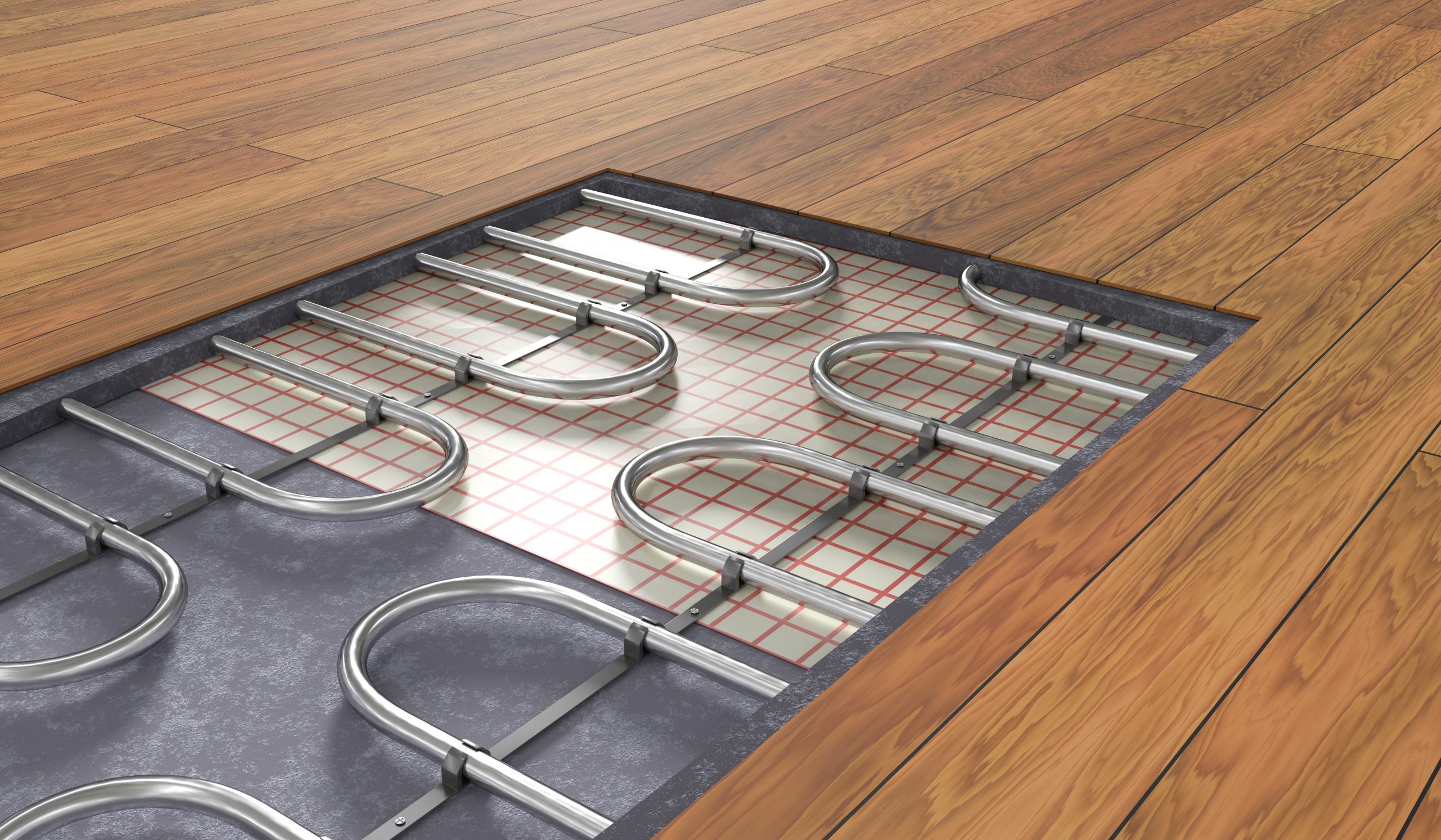
You Ask, We Answer: What Are the Pros and Cons of Heated Floors?
If winter weather has the floors in your Connecticut home feeling less than warm and fuzzy, you’re not alone. Many of us dread the walk across the kitchen floor for our morning coffee because we know the chill that will greet us this time of year. But what if you could have floors that feel warm and comfortable, even to bare feet? Let’s take a look at the pros and cons of heated floors, and whether or not they’ll work for your Connecticut home.
What is radiant floor heating?
While standard home heating systems heat the air above the floors, radiant floor heating warms the floors themselves. Controlled by its own thermostat, a radiant floor heating system can be set to a warm but comfortable temperature (most people opt for between 80-85 degrees) that helps the room feel warmer, even if the ambient temperature of the room is cooler. Think of your favorite patch of afternoon sun in your house, and how good it feels to stand its warmth: That’s the effect of radiant floor heating in your home.
What are the types of radiant floor heating?
There are two types of radiant floor heating: electric heating and hydronic (hot water) heating. They both work underneath the floor’s surface to heat the floors, but use different energy sources to do so.
Electric floor heating uses electric components that snake back and forth on mats that are laid out on the sub-flooring. For homeowners who are DIYers or for homes undergoing renovation, this is a popular choice, as it’s relatively easy to install. Electric floor heating is also pretty responsive, heating up in about 30-60 minutes from the time it’s set to go on. Many homeowners find this useful as they can easily control when the heating comes on and off—especially with New England’s wild weather swings!
Using a similar snake pattern underneath the surface of the floor, hydronic heating is made of plastic tubing that pumps hot water to heat the floors. Because the install is much more labor intensive and disruptive, this option is often saved for new construction homes rather than a renovation project, and is popular with homeowners who want headed floors throughout their house (and not just in the kitchen and bathrooms, for instance). One other key difference to note: Hydronic heating takes much longer than electric heating to warm the floors, so many homeowners choose to leave it on throughout the day instead of just in the cooler mornings or evenings.
What are the benefits of radiant floor heating?
Aside from keeping feet (and paws!) comfortably toasty, radiant heating can help you cut down on your heating bills overall. Because the floors are warmer, many homeowners can dip the ambient temp in the room without feeling the chill—and lower thermostats mean lower heating bills.
Another benefit to radiant heating? Heated floors create uniform warmth, whether you’re sitting by a window far away from a heating vent, or in the center of the room.
Electric floor heating is also very low maintenance. Once it’s installed correctly, you can set it and forget it for about 20 years. They’re also quiet (no machinery to “kick on”!), don’t scatter dust or allergens the way hot air through a vent might, and they’re also energy efficient.
Are there any drawbacks to heated floors?
If you’re not in the market to tear up your existing floors, then heated floors are not right for you at this point in time. One of the main drawbacks to installing heated floors is that they require existing flooring to be pulled up before the radiant heating system can be installed.
Another thing to consider: Radiant heating will slightly elevate your floor height, depending on which system you choose.
And lastly, radiant floor heating is an investment. While you may save money in the long run on your overall heating bill, you will need to budget for the cost of buying the heating system, installation, and any other work you’ll need done (like tearing up existing flooring). Still, for the comfort of stepping out of bed and not shrieking in horror at the chill underfoot, you may just find this is one investment in your Connecticut home that’s worth every penny!




